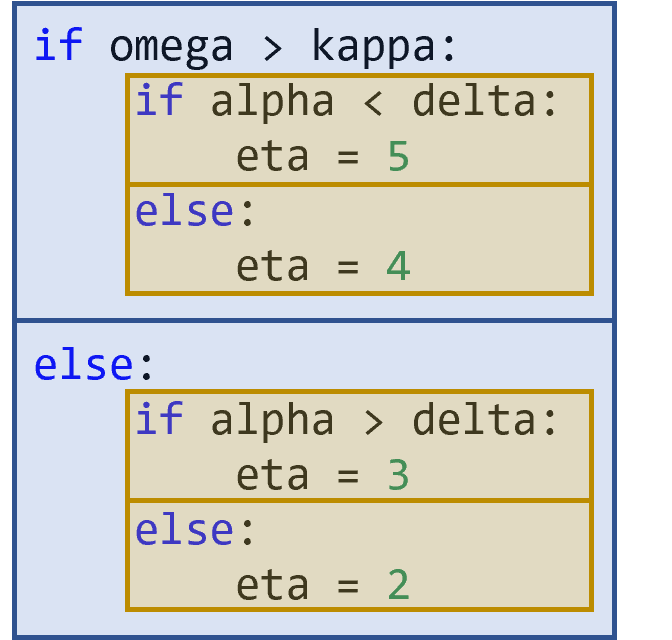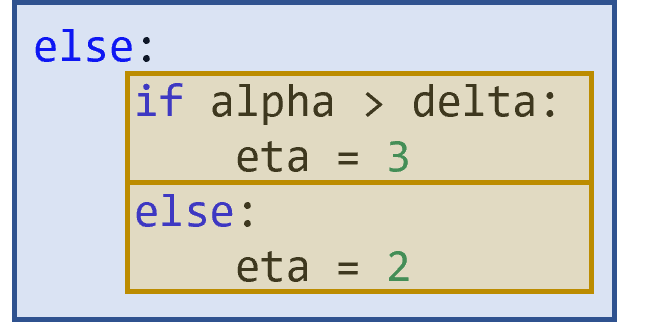Section 4.13 Nested If/Else Statements
Subgoals for Evaluating Selection Statements.
Subsection 4.13.1
Given the following declarations:
alpha = 2
delta = 3
eta = 0
omega = 2.5
kappa = 3.0
Evaluate these statements and determine the value of all variables used.
if omega > kappa:
if alpha < delta:
eta = 5
else:
eta = 4
else:
if alpha > delta:
eta = 3
else:
eta = 2
Subsection 4.13.2 SG1: Diagram which statements go together.
In this diagram, the first thing to note is the parent/outer if-else statement highlighted in blue.
The true branch of the parent/outer statement contains an inner if-else.
Likewise, the else branch of the parent/outer statement contains an inner if-else.

Subsection 4.13.3 SG2: For if statement, determine whether true or false
Because there are 2 sequential if-statements, we start with the first one, and then repeat SG2 and SG3 for the other.
First we evaluate
(omega > kappa):
Subsection 4.13.4 SG3: If true, follow true branch. If false, follow else branch (OR do nothing if there is no else branch).
The else branch contains another if-else statement, so we must repeat the SG2 and SG3.

Subsection 4.13.5 SG2: For if statement, determine whether true or false
Start with the first if-statement in the inner sequence.
First we evaluate
(alpha > delta):
Subsection 4.13.6 SG3: If true, follow true branch. If false, follow else branch (OR do nothing if there is no else branch).
The condition is False so we follow the else branch.
eta = 2
Subsection 4.13.7 Practice Pages
You have attempted of activities on this page.
